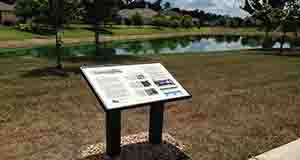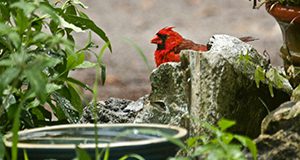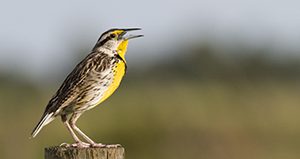As the number of feral cats continues to increase, land managers, public health officials, and private citizens are voicing concerns about how to address the nuisance and public health impacts, as well as animal welfare concerns, that feral cats create. Trap-neuter-release programs aimed at reducing feral cat populations without euthanasia are gaining popularity in the United States. But do they work? Authors Mark Hostetler, Samantha M. Wisely, Steve Johnson, Elizabeth F. Pienaar, and Martin Main discuss the pros and cons of trap-neuter-release programs in this 8-page fact sheet published by the UF/IFAS Department of Wildlife Ecology and Conservation.
https://edis.ifas.ufl.edu/uw468
Tag: Mark Hostetler
Building for Birds Evaluation Tool: Built Areas as Habitat for Forest Birds
A variety of forest birds will use trees and shrubs in built areas as breeding, wintering, and stopover habitat. Scientists have created an online tool to help these birds and the people who appreciate them. This 20-page fact sheet written by Mark Hostetler and Jan-Michael Archer and published by the UF/IFAS Department of Wildlife Ecology and Conservation describes the online tool and shows how it can help forest birds.
edis.ifas.ufl.edu/uw418
Building for Birds Evaluation Tool: Breeding and Wintering Habitat for Forest Birds
Several bird species use forest fragments and trees conserved in built areas as breeding, wintering, and stopover habitat. Scientists have created a Building for Birds online tool to help these birds and the people who appreciate them. This evaluation tool is most useful for small developments or developments in already fragmented landscapes.
The tool is designed for use when no opportunity is available to conserve large forest areas of 125 acres or more within a proposed development. Developers are sometimes reluctant to conserve trees and forest fragments in subdivided residential/commercial areas because it costs time and money, but there is value in this conservation effort not only for many different species of forest birds, but for future homeowners waking to birdsong in the mornings.
This 17-page fact sheet written by Mark Hostetler and Jan-Michael Archer and published by the Department of Wildlife Ecology and Conservation describes the online tool and shows how it can help preserve breeding and wintering habitat for migrating birds.
http://edis.ifas.ufl.edu/uw417
Building for Birds Evaluation Tool: Forest Fragments Used as Stopover Sites by Migrant Birds
Several bird species use forest fragments and trees conserved in built areas as breeding, wintering, and stopover habitat. Scientists have created a Building for Birds online tool to help these birds and the people who appreciate them. This evaluation tool is most useful for small developments or developments in already fragmented landscapes.
The tool is designed for use when no opportunity is available to conserve large forest areas of 125 acres or more within a proposed development. Developers are sometimes reluctant to conserve trees and forest fragments in subdivided residential/commercial areas because it costs time and money, but there is value in this conservation effort not only for many different species of forest birds, but for future homeowners waking to birdsong in the mornings.
This 18-page fact sheet written by Mark Hostetler and Jan-Michael Archer and published by the Department of Wildlife Ecology and Conservation describes the online tool and shows how it can help preserve stopover habitat for migrating birds.
http://edis.ifas.ufl.edu/uw416
Conservation Subdivision: Post-construction Phase: Creating Signs to Educate Residents

Installing educational signs is one way to increase awareness and participation in conservation activities. This six-page fact sheet written by Mark Hostetler and published by the Department of Wildlife Ecology and Conservation explains how to create educational signs and install them in residential neighborhoods as a way to inform residents about biodiversity conservation. The fact sheet, one of the UF/IFAS Conservation Subdivision series, explains how to design effective signs, how to manage a series of signs to keep the information fresh, and how to maintain the signs to ensure that residents and visitors to the community continue to benefit and maintain their homes, yards, and neighborhoods sustainably for years to come.
http://edis.ifas.ufl.edu/uw407



